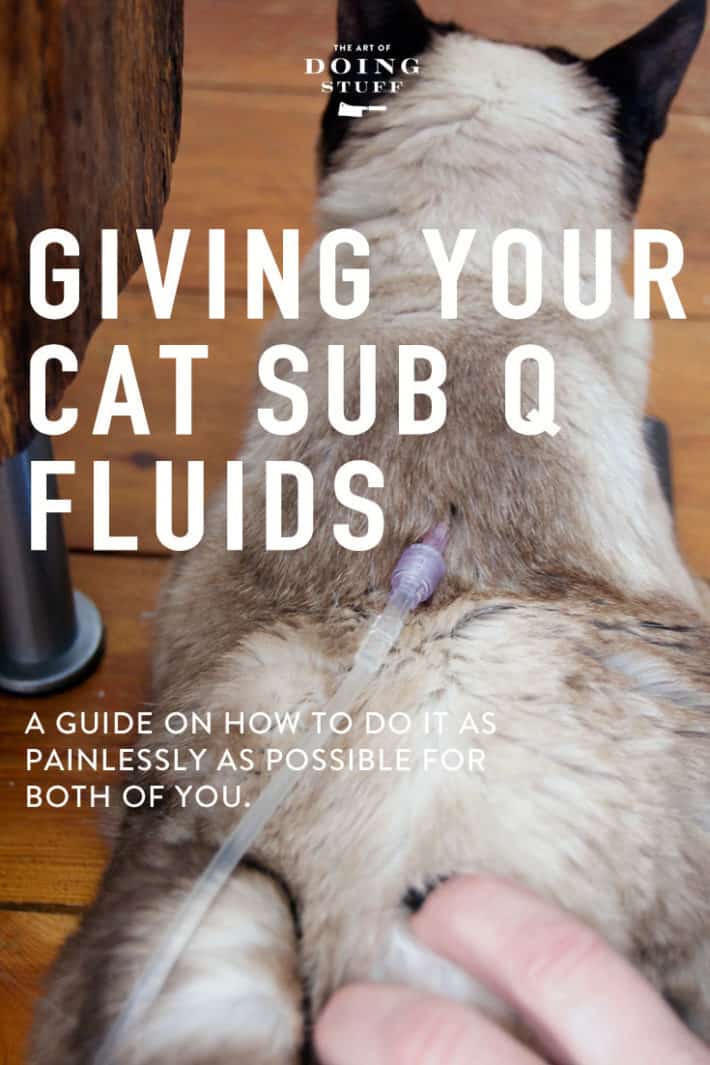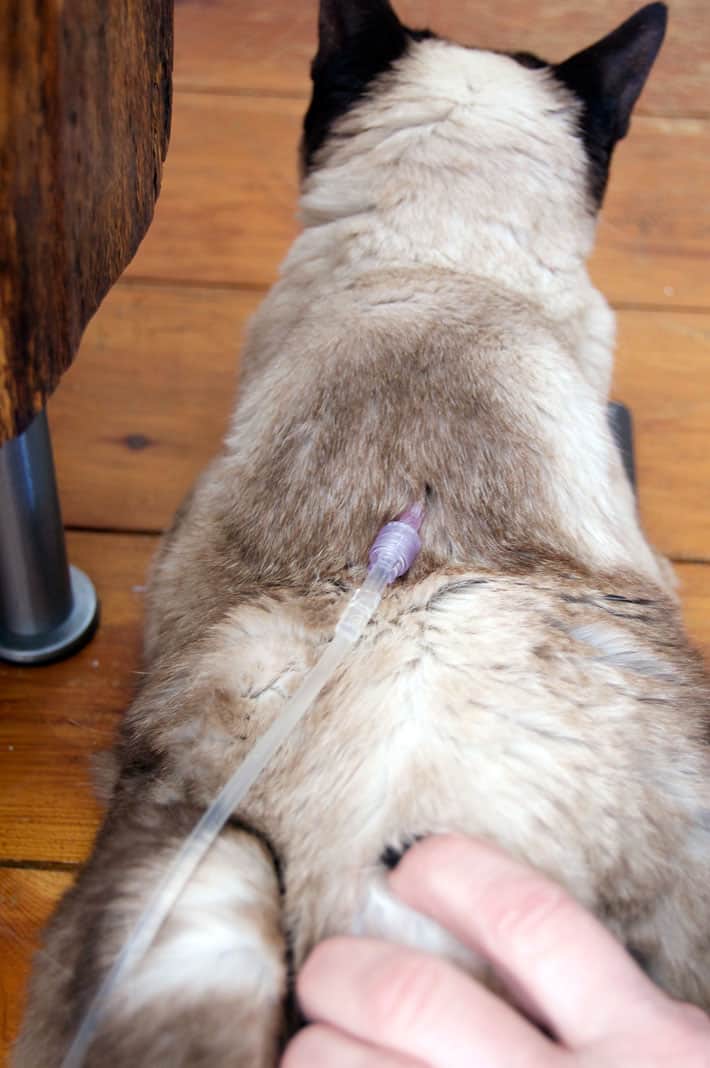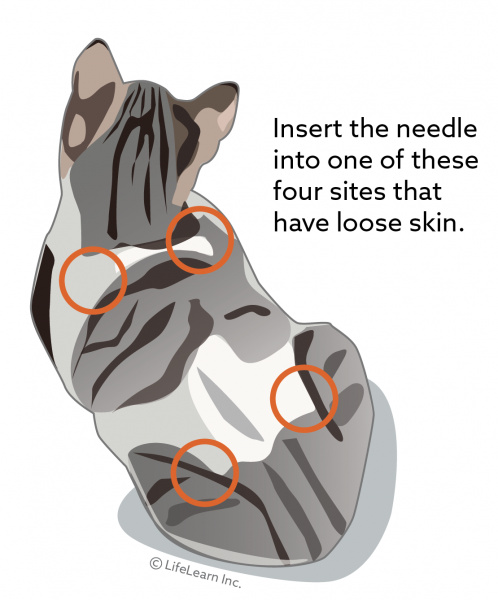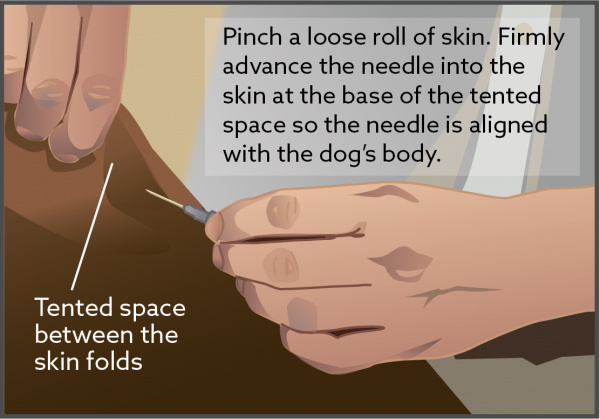Subcutaneous Fluids for Cats Side Effects
The advantages of subcutaneous fluids are the ease of administration convenience and low cost. Observe the effect the treatment has on your cat when considering subcutaneous fluids.

How To Give Subcutaneous Fluids To Your Elderly Cat
Other cats are unable to emotionally adjust and experience a decrease in emotional quality of life as a result.

. Though most procedures complete without any complications cat owners should know about the side effects of subcutaneous fluids. INFUSE FLUIDS ALWAYS VERY SLOWLY ESPECIALLY IF YOU. 3 Fluids The mainstay of most chronic renal failure patients care especially in their advanced stages is fluid therapy.
Fluid buildup in a cat with heart problems can become a medical emergency. Sub cutaneous SQ fluid administration is providing fluids into the space under the skin from where it can be slowly absorbed into the blood and body. Some cats are somewhat lethargic after treatment.
The pet is generally sedated before the procedure but can experience numbness and pain in the injection area after the process. Fluids may even move under the skin of the front or rear legs in rare instances. As the fluids are running a lump will form under the skin.
Subcutaneous fluid administration is the most common route of fluid input in the long term though intravenous fluid administration is typically preferred at the outset and may be necessary intermittently throughout the. A competent fluid demo should go as follows. Lots of animals require extra fluids either temporarily or indefinitely to insure that they receive adequate hydration.
Most commonly they are used in home treatment of mild to moderate kidney disease. Just Now Your veterinarian will tell how much to give your cat for your specific situation. Have the animal the client and yourself with or without an assistant in the room with the unopened fluid bag the unopened fluid line an unopened needle a towel and a fluid hanger.
With chronic r enal failure cats usually lose more fluids than usual through their kidneys and as the disease. Offer the client pen and paper to take notes or offer to write the steps down for them. Effects of IV Fluids in Dogs and Cats With Kidney Failure.
As a rule the average sized cat should receive 100-150 ml of fluids at one time. As the toxins build up and the cat becomes dehydrated he loses his appetite and energy. Though most procedures complete without any complications cat owners should know about the side effects of subcutaneous fluids.
Fluid overload is a commonly mentioned negative side effect of intravenous fluid therapy especially in patients with initial renal dysfunction. Risks Damage to a vein during injection or during fluid therapy. Your cat will probably receive subcutaneous fluids at a veterinary clinic.
If that happens to you and your cat there could be things to change about the process to make things more comfortable for both of you. Feline Hyperthyroid Disease. Only really need to worry about fluid overload when giving IV fluids and as mentioned above especially in heart patients.
Subcutaneous SQ fluid administration is the term used to describe giving fluids into the space under the skin subcutaneous tissue from where it can be slowly absorbed into the blood and body. Preview Show more. Subcutaneous Fluid Administration In Cats VCA Animal.
Do not be alarmed. Over a few hours the fluid will be absorbed and your pets health should improve. Cat Fighting or Resisting Fluids Fluids Not Flowing Leaking Needle Problems Cant Read the Bag Collapsed Bag.
Some cats will fight against or resist fluids. If absorption is slow gravity may cause the fluids to migrate downward along the side of the body. It is normal for this area to swell up like a camel hump.
Air embolism can occur if there is air in the syringe or bag. However they are not appropriate for treatment of shock or severe dehydration. The fluid may move down into the abdomen or legs.
Like any drug fluids can be dangerous for the life of the cat complications such as edema and respiratory failure coagulopathies electrolyte disturbances acid-base disorders can occur. Symptoms of Hyperthyroidism in cats include frequent vomiting diarrhea and polydipsia increased thirst clues that Hyperthyroid cats may be dehydrated. What does subcutaneous fluids do for cats.
If your cat is unable to. If you are using two locations on your cat you should give half of that amount in. Subcutaneous Fluid Administration Recovery in Cats Immediately following sub-q administration of fluids your cat will have a lump where the fluid was inserted.
The pet is generally sedated before the procedure but can experience numbness and pain in the injection area after the process. However the guidelines emphasize that subcutaneous fluids are not recommended in cases of severe dehydration or shock. The biggest concern is the pain and discomfort associated with the administration.
This is a very useful way of providing additional fluids to cats and helping to manage and prevent dehydration. Cat Fighting or Resisting Fluids. These problems can be addressed by feeding canned food which is about 80 percent water and giving fluids under the skin.
The I Vs have it. Here is a pictured guide to assist with the learning experience of. Only give the amount prescribed by your vet.
Subcutaneous fluids for cats side effects. This is a very useful way of provi ding additional fluids to cats and helping to manage and prevent dehydration. A less physiologic option for maintaining hydration in an animal with AKI is the use of subcutaneous fluids.
The body absorbs subcutaneously slower than intravenous fluids therefore are not suitable for cats with hypovolemia shock or dehydration. Although it may sound frightening at first done properly giving Sub-Q fluids isnt all that bad and your cat will feel so much better afterward that its well worth learning how. This is just a maintenance fluid amount for a healthy adult cat Does not factor in additional losses due to kidney disease.
Too much subcutaenous fluids can cause hypertension and cats that have heart problems can develop fluid buildup in the body. The technique is simple but sometimes daunting to the beginner. The biggest concern is the pain and discomfort associated with the administration.
This is normal and the fluid will absorb into the tissues. These subcutaneous or sub-Q fluids are identical to the sterile electrolyte fluids given intravenously. Normal daily basal fluid rate for a cat her size is 180 mls.
This is the pocket of fluid that will be absorbed over the next few hours.

Subcutaneous Fluid Administration In Cats Vca Animal Hospitals

Subcutaneous Fluid Administration In Cats Vca Animal Hospitals
Comments
Post a Comment